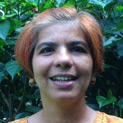The United Nations (UN) Climate Summit and the People’s Climate March in New York are precursors to the UNFCCC COPs in Lima (2014) and Paris (2015)—among the many events concerned with curbing climate change and achieving sustainable development.
Though these are not new challenges, the imperative to address them has become urgent in the face of global warming and economic crisis. Within this context, the idea of a green economy, with its promise of delivering economic growth without compromising the Earth’s ecological integrity, is seductive. But can the green economy deliver on its promises? A quick overview of prior economy-environment connections is in order before scientists and citizens can assess that question.
Economic and environmental issues first became linked in international development agendas at the first UN Conference on the Human Environment, held in Stockholm in 1972. These early linkages focused on “brown issues,” such as industrial waste, air and water pollution, and other ecological effects of economic growth.
Concerns about resource scarcity and its impact on future economic growth also began appearing at this time. In the developing world and the tropics, the links between economic and environmental activities appeared as concerns over deforestation and land degradation.
However, by the end of the 1980s, scientists and policy makers began talking about economic and environmental issues as being two sides of the same green coin. One of the most famous formulations of this linkage appears in the 1987 report, Our Common Future. Published by the World Commission on Environment and Development (WCED) under the direction of Gro Harlem Brundtland (then Prime Minister of Norway), the WCED report advocates the need for “sustainable development,” which it defines as:
. . . development that meets the needs of the present without compromising the ability of future generations to meet their own needs. It contains within it two key concepts: the concept of ‘needs’, in particular the essential needs of the world’s poor, to which overriding priority should be given; and the idea of limitations imposed by the state of technology and social organization on the environment’s ability to meet present and future needs.
The 1992 UN Conference on the Environment and Development in Rio de Janeiro, popularly known as the Earth Summit, consolidated these linkages and outlined an action plan for the 21st century (Agenda 21). A Commission on Sustainable Development was established at Rio and charged with follow-up of Agenda 21 and the various accords signed at the Earth Summit. Twenty years later, the call for sustainable development and poverty eradication was renewed at the 2012 UN Conference on Sustainable Development. The idea of a green economy appears in the lead-up to the 2012 Conference and is defined as
. . . one that results in improved human well-being and social equity, while significantly reducing environmental risks and ecological scarcities. In its simplest expression, a green economy can be thought of as one which is low carbon, resource efficient and socially inclusive.
It clearly traces its legacy to the WCED definition of sustainable development.
But are “green economy” and “green growth” models really different from prior development models, ones which are in large measure responsible for the current impasse? Is a green economy—one where ostensibly neither ecology nor economy is compromised—also conducive to equitable and peaceful development? Its advocates answer with a resounding yes; the critics reply with a categorical no.
Given the seriousness of climate change, scientists (and citizens) must engage both answers analytically and critically in order to assess them. This will require patience and intellectual curiosity to understand the history of international development, and its relationship with science (for those willing to make the effort, Maggie Black’s “No Nonsense Guide to International Development” is an excellent place to start). But forsaking that effort to settle for the expediency of pragmatic policy responses is tantamount to forsaking our future.
We want you to share Forests News content, which is licensed under Creative Commons Attribution-NonCommercial-ShareAlike 4.0 International (CC BY-NC-SA 4.0). This means you are free to redistribute our material for non-commercial purposes. All we ask is that you give Forests News appropriate credit and link to the original Forests News content, indicate if changes were made, and distribute your contributions under the same Creative Commons license. You must notify Forests News if you repost, reprint or reuse our materials by contacting forestsnews@cifor-icraf.org.














